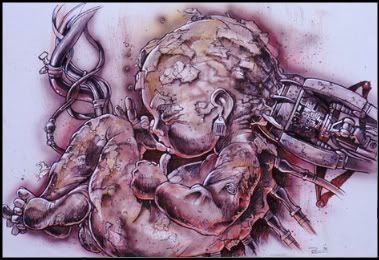
The smaller group would feel more responsible to do the more detailed actions necessary to complete their goal, but if it was the larger group handling the more detailed tasks each person would feel less responsible to make things happen, communication would be more difficult, and some people will rely on others to do the tasks they were assigned which could lead to them not being done at all or being done very poorly. Another way to increase participation in a group is to create a sense of belonging and privilege. This is much easier with smaller groups, for example you can do things such as; create a stylish t-shirt or jacket with the organizations name on it to create a sense of belonging, build up the reputation of your organization so that it is socially desirable to be a part of, or make an initiation process that when completed makes the people who passed feel like they have accomplished something. Another way is when unwanted actions are performed like a boring task and it is rewarded with a small token of appreciation or a sense of belonging instead of a large reward. The person will change their negative feeling of boredom to match their now positive feeling of happiness (which are on a spectrum of negative to positive) and belonging in order to justify their behavior of performing the boring task, so the boring task becomes something they enjoyed or don't mind doing. If it is a larger reward the person will not change their negative feeling of boredom to a positive feeling to match their feeling of happiness because the reward now justifies the behavior. This is just one way to apply the theory of cognitive dissonance. This can also be done with the larger group with modifications. Activism in a sense is an art form, it requires the right amount of skill when stroking the brush of action to get the desired change you want in your socially constructed painting.
Thursday, February 25, 2010
Diffusion of Responsibility in Activism
The social phenomenon of Diffusion of Responsibility in Activism is nothing new, but it's role in activist groups has rarely been discussed. In a group of usually 10 or more people the individual feeling of responsibility to take action is lesser than if it were a group of only 3 people. This conflicts with the idea of power in numbers because the more people you have the less responsible each person feels to take the actions necessary to reach the desired goal which means each person exercises less power to make positive social change. This is not the wanted effect of a activist organization. When organizing a group of individual people to protest something it would be much more effective to have a smaller group when assigning more detailed tasks and a larger group to handle one task (usually the actual protest/boycott).
Tuesday, February 23, 2010
CUT THE CORD
sighing instead of crying will never suffice
for every person who is emotionally crippled will die not once but twice.
Once, the day their mind crumbles under societal pressures,
oppressors stop pulling down their psychological levers,
stop using them for a resting place for your heavy hand,
let them be free! they are able to withstand.
or maybe, just maybe it was their own choice,
they came to a split in the road and took the one with no voice.
the path of least resistance some might call it
more like the path of oppression which we're all fronted.
Twice, is the day when they can no longer go on,
they look back to see they were just a pawn.
"How could it be that I never broke from my role?"
maybe it was because of all that bullshit you learned in school.
Cant you see the time is now to pull the plug!?
the plug that resembles chains in which we tug.
This invisible force that keeps us down
and when seen can be most profound.
It must be destroyed, we must be freed,
some be weaned, some must lead,
with every blink of the eye our minds secede
So cut the cord and let the bullshit bleed!

for every person who is emotionally crippled will die not once but twice.
Once, the day their mind crumbles under societal pressures,
oppressors stop pulling down their psychological levers,
stop using them for a resting place for your heavy hand,
let them be free! they are able to withstand.
or maybe, just maybe it was their own choice,
they came to a split in the road and took the one with no voice.
the path of least resistance some might call it
more like the path of oppression which we're all fronted.
Twice, is the day when they can no longer go on,
they look back to see they were just a pawn.
"How could it be that I never broke from my role?"
maybe it was because of all that bullshit you learned in school.
Cant you see the time is now to pull the plug!?
the plug that resembles chains in which we tug.
This invisible force that keeps us down
and when seen can be most profound.
It must be destroyed, we must be freed,
some be weaned, some must lead,
with every blink of the eye our minds secede
So cut the cord and let the bullshit bleed!

Labels:
digital self,
emotionless,
matrix,
oppression,
patriarchy,
protest,
resistance,
slavery,
struggle
Subscribe to:
Posts (Atom)







